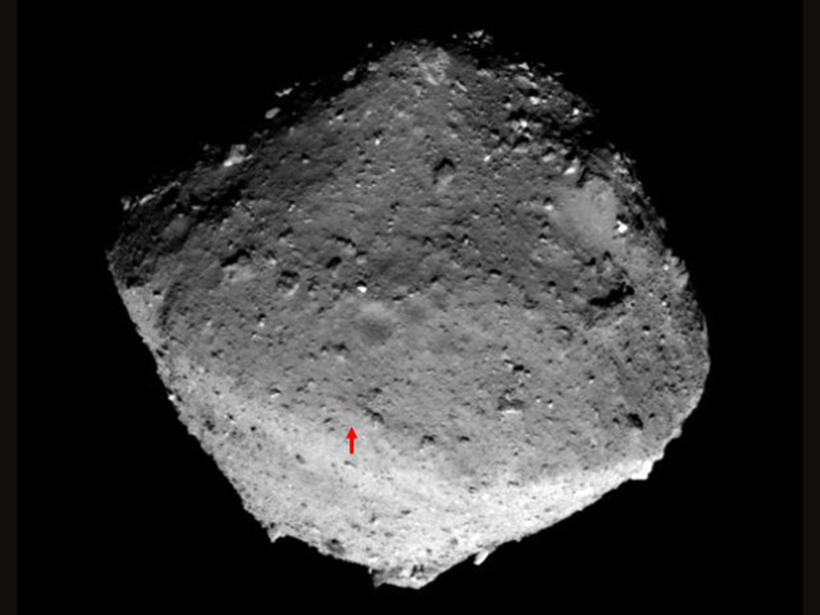Tonight, Japan’s Hayabusa2 spacecraft will attempt its first touchdown on the asteroid Ryugu. The craft will attempt to land softly, collect a rock sample, lift off, and return to its orbit around the asteroid. Space fans can follow along with the mission’s live stream.
Preparations for tonight’s touchdown attempt were complicated by the unexpected roughness of Ryugu’s surface. Before Hayabusa2’s arrival, scientists thought that Ryugu’s surface would be covered with a fine-grained regolith. It became clear after the rovers landed that the asteroid’s surface instead was covered in centimeter-scale gravel and jagged meter-scale boulders.
Mission scientists have been conducting experiments with gravel similar in size, strength, and composition to that found on Ryugu to ensure that the craft could still collect surface samples. Hayabusa2’s sample collection method involves shooting a high-speed metal bullet into the rock surface. The resulting impact ejects material that is passively collected in a horn. The experiments showed that this collection method should still work:
The surface of Ryugu was not what we expected. So our sampler team had to conduct an experiment to check we could still gather material from the asteroid surface when we attempt #haya2_TD touchdown this Friday! https://t.co/bCzvW2gwSr pic.twitter.com/XxJXETKB6N
— HAYABUSA2@JAXA (@haya2e_jaxa) February 18, 2019
Hayabusa2 arrived at Ryugu on 27 June 2018. Since it entered orbit, the spacecraft has conducted thermal and gravity measurements and made detailed maps of the asteroid’s surface. The orbiter also successfully deployed two rovers and a lander onto the surface that sent back the first views of what it would be like to stand on the surface of an asteroid:
Rover-1B succeeded in shooting a movie on Ryugu’s surface! The movie has 15 frames captured on September 23, 2018 from 10:34 – 11:48 JST. Enjoy ‘standing’ on the surface of this asteroid! [6/6] pic.twitter.com/57avmjvdVa
— HAYABUSA2@JAXA (@haya2e_jaxa) September 27, 2018
Ryugu is approximately 900 meters in diameter and travels in a 474-Earth-day elliptical orbit between Earth and Mars. It is a C-type asteroid made of carbonaceous material that likely dates back to the birth of the solar system. In addition to collecting samples of Ryugu’s surface material, a later mission stage will create an artificial impact crater to excavate and collect subsurface material. Hayabusa2 is scheduled to return to Earth in late 2020.
Hayabusa2 should touch down on Ryugu today around 6:00 p.m. Eastern Standard Time (8:00 a.m. Friday Japan Standard Time). You can watch a live stream of the attempt on the mission’s website or social media account.
—Kimberly M. S. Cartier (@AstroKimCartier), Staff Writer
Citation:
Cartier, K. M. S. (2019), Asteroid mission attempts touchdown, sample grab, Eos, 100, https://doi.org/10.1029/2019EO116841. Published on 21 February 2019.
Text © 2019. AGU. CC BY-NC-ND 3.0
Except where otherwise noted, images are subject to copyright. Any reuse without express permission from the copyright owner is prohibited.
Text © 2019. AGU. CC BY-NC-ND 3.0
Except where otherwise noted, images are subject to copyright. Any reuse without express permission from the copyright owner is prohibited.

